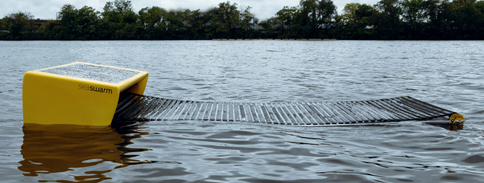Seaswarm: Oil-Absorbing Robots Suck it Up
-
-
slice.mit.edu
Filed Under
Recommended

Kevin Costner is not the only person who’s been working on how to remediate disasters like this summer’s BP oil spill. MIT researchers introduced a prototype of their solution on August 28 at the Venice Biennale, which focuses this year on nanotechnologies. It’s called Seaswarm.
Their solution, a fleet of boxy vehicles with attached conveyor belts, relies on a new nanomaterial that can absorb oil in water—without the water—and then release the oil when heated. Their idea is that thousands of these autonomous, self-directed robots would roll along the water’s surface and quickly, effectively, and inexpensively collected spilled oil. They estimate 5,000 units operating continuously would be able to clean up an oil spill the size of the BP accident in one month.
And it’s energy efficient. A Seaswarm robot, which measures 16’ x 7’ feet, uses two square meters of solar panels for self-propulsion. With just 100 watts, the equivalent of one household light bulb, it could clean continuously for weeks. Watch a video of the oil suckers at work.
Seaswarm is a project of MIT’s SENSEable City Laboratory.







